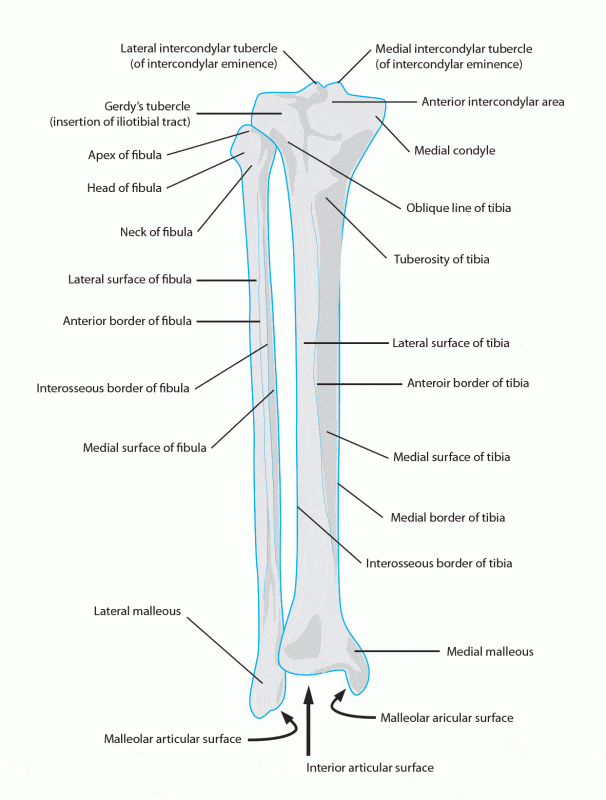Anatomy of the Fibula
The Fibula is the thinner of the two long bones present in the lower leg. It runs on the outer side of the leg, from knee to ankle, parallel to the other bone called tibia. It starts a little below the knee joint; therefore, it does not participate in the formation of knee joint. However, on its lower end it extends further below than tibia, forming the outer part of ankle joint.

The lower leg bones (tibia and fibula) are connected to each other at both upper and lower ends with the help of ligaments (bone to bone fibrous attachments).
Anatomically fibula is divided into three components:
Head (upper end), which is present almost at the back of the head of tibia.
Body (or shaft) of fibula, which has four surfaces and four borders
The lateral Malleolus (lower end); it is convex from outside and forms the prominent bump on the external side of ankle, while its inner surface joins with the anklebone (talus) to form outer part of the ankle joint ( the inner part of ankle joint is formed by tibia and talus)
As it descends, fibula inclines a little forward so that its lower end is placed relatively ahead of the upper end.
The Fibula is a very thin bone, actually the thinnest of all the long bones present in the body. It does not play any significant role in supporting the leg; rather it serves more as a surface for muscle attachment or for harvesting bone during certain surgical procedures.





